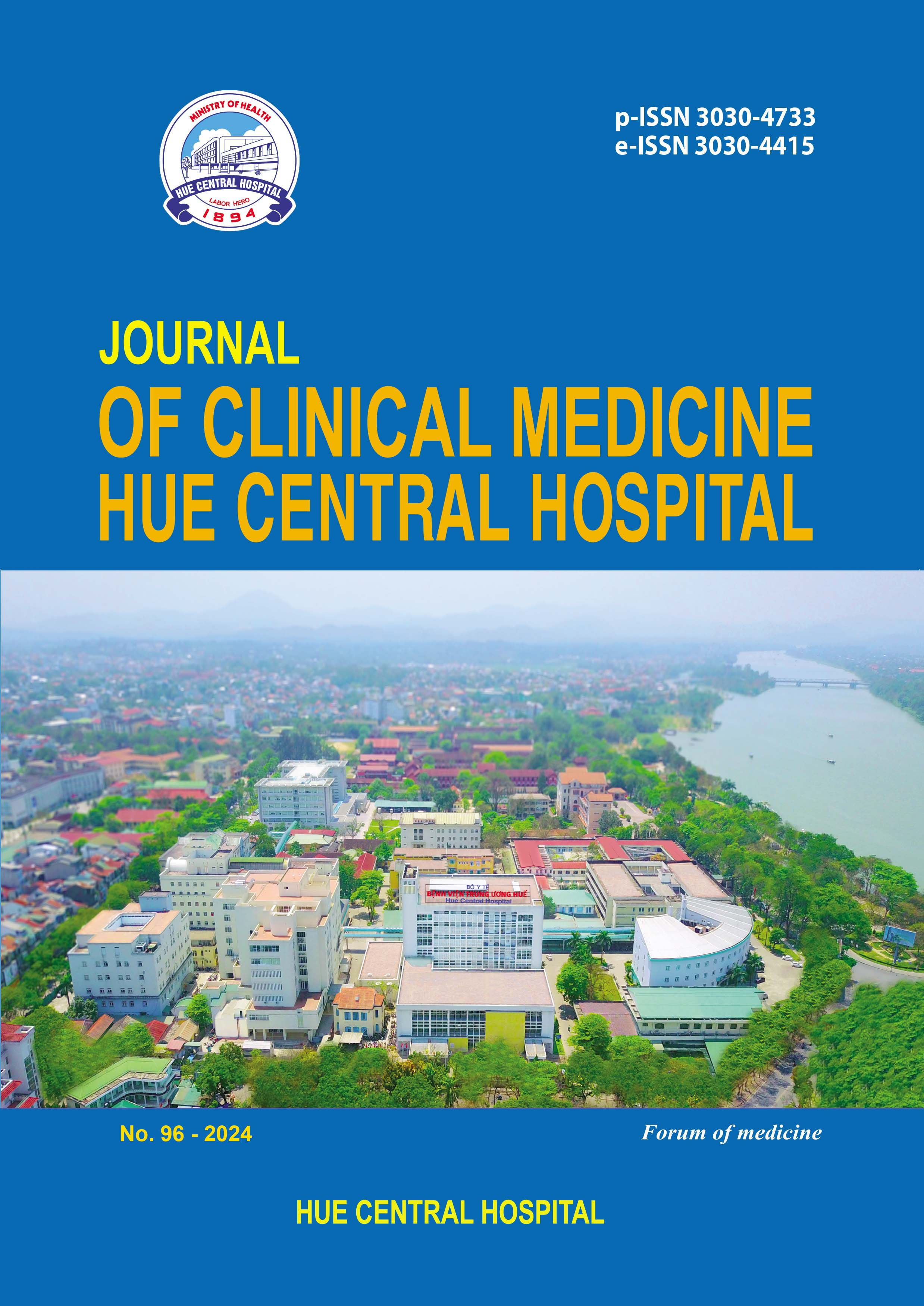Abstract
Backgroud: Residual SYNTAX Score (rSS) was derived from SYNTAX score to quantify the burden of residual coronary artery disease after percutaneous coronary intervention (PCI), and has been validated as an independent predictor for clinical adverse events. Therefore, we conducted the study to describe the characteristics of residual Syntax score in patients with ST-elevation myocardial infarction after percutaneous coronary intervention and to investigate the relationship of residual Syntax score with outcomes in patients with ST segment elevation acute myocardial infarction after percutaneous coronary intervention.
Methods: Cross - sectional study of patients with acute ST-elevation myocardial infarction undergoing percutaneous coronary intervention at Da Nang hospital from March 2022 to September 2023.
Results: The study comprised 139 patients in total; the mean age was 63.51 ± 13.07, and 29.5% of the patients were female. The average residual Syntax score was 6.4 ± 5.9. The group with residual Syntax 0 points, 1 - 7 points, ≥ 8 points accounted for 11.5%, 59%, 29.5% respectively. High residual Syntax scores were related to age, gender, heart rate > 100, systolic BP < 100, Killip ≥ 2, history of hypertension, EF < 40%, Syntax score, ≥ 2 culprit coronary, TIMI < 3 after intervention (p < 0.05). Syntax residual ≥ 8 group had a greater rate of mortality within 30 days, major cardiovascular events in the hospital, and major cardiovascular events within 30 days compared to the other two groups. This difference was statistically significant (p < 0.05).
Conclusion: The average residual Syntax score was 6.4 ± 5.9, residual Syntax score 0 points, 1 - 7 points, and ≥ 8 points accounted for 11.5%, 59%, and 29.5%, respectively. High residual Syntax scores were associated with 30 - day mortality, major in - hospital cardiovascular events, and 30 - day major cardiovascular events.
References
Ibanez B, James S, Agewall S, Antunes MJ, BucciarelliDucci C, Bueno H, et al. 2017 ESC Guidelines for the management of acute myocardial infarction in patients presenting with ST-segment elevation: The Task Force for the management of acute myocardial infarction in patients presenting with ST-segment elevation of the European Society of Cardiology (ESC). European Heart Journal. 2017;39(2):119-177.
Almas T, Akram A, Ehtesham M, Ahmed R, Khedro T, Malik U, et al. Multi-vessel Versus Culprit-vessel-only PCI for STEMI: Where Does the Jury Stand? Annals of Medicine and Surgery. 2021;65.
DeJong C, Redberg RF. Multivessel or culprit vessel–only percutaneous coronary intervention for patients with acute myocardial infarction and cardiogenic shock: real-world evidence in support of CULPRIT-SHOCK. JAMA Internal Medicine. 2020;180(10):1280-1283.
Généreux P, Palmerini T, Caixeta A, Rosner G, Green P, Dressler O, et al. Quantification and impact of untreated coronary artery disease after percutaneous coronary intervention: the residual SYNTAX (Synergy Between PCI with Taxus and Cardiac Surgery) score. Journal of the American College of Cardiology. 2012;59(24):2165-2174.
Zeng Y, Yang S, Wang X, Fan J, Nie S, Wei Y. Prognostic impact of residual SYNTAX score in patients with obstructive sleep apnea and acute coronary syndrome: a prospective cohort study. Respiratory research. 2019;20:1-8.
Barthelemy O, Rouanet S, Brugier D, Vignolles N, Bertin B, Zeitouni M, et al. Predictive value of the residual SYNTAX score in patients with cardiogenic shock. Journal of the American College of Cardiology. 2021;77(2):144-155.
Tarasov R, Ganyukov V. TCT-505 Prognostic role of initial and residual SYNTAX SCORE in patients WITH ST-SEGMENT ELEVATION myocardial infarction AFTER primary percutaneous coronary intervention. Journal of the American College of Cardiology. 2017;70(18S):B209-B210.
Yan L, Li P, Wang Y, Han D, Li S, Zhang J, et al. Impact of the residual SYNTAX score on clinical outcomes after percutaneous coronary intervention for patients with chronic renal insufficiency. Catheterization and Cardiovascular Interventions. 2020;95:606-615.
Braga CG, Cid-Alvarez AB, Diéguez AR, Alvarez BA, Otero DL, Sánchez RO, et al. Prognostic impact of residual SYNTAX score in patients with ST-elevation myocardial infarction and multivessel disease: Analysis of an 8-year all-comers registry. International journal of cardiology. 2017;243:21-26.
Khan R, Al - Hawwas M, Hatem R, Azzalini L, Fortier A, Joliecoeur EM, et al. Prognostic impact of the residual SYNTAX score on in - hospital outcomes in patients undergoing primary percutaneous coronary intervention. Catheterization and Cardiovascular Interventions. 2016;88(5):740-747.
Phương NHMP. Điểm syntax tồn lưu sau can thiệp nhồi máu cơ tim cấp st chênh lên trên người bệnh nhiều nhánh mạch vành. Kỷ yếu hội nghị bệnh viện Tim mạch An Giang 2017. 2017
| Published | 20-06-2024 | |
| Fulltext |
|
|
| Language |
|
|
| Issue | No. 96 (2024) | |
| Section | Original article | |
| DOI | 10.38103/jcmhch.96.13 | |
| Keywords | Nhồi máu cơ tim cấp ST chênh lên, điểm Syntax tồn dư, can thiệp động mạch vành qua da, biến cố tim mạch Acute ST-elevation myocardial infarction, residual Syntax score, percutaneous coronary intervention, major cardiovascular events |

This work is licensed under a Creative Commons Attribution-NonCommercial-NoDerivatives 4.0 International License.
Copyright (c) 2024 Journal of Clinical Medicine Hue Central Hospital

